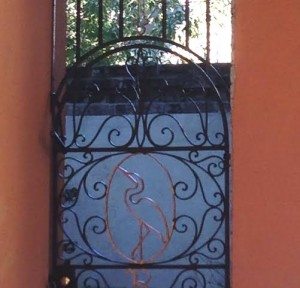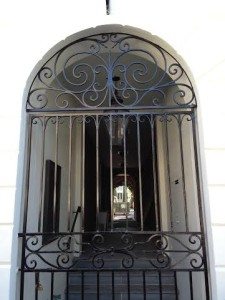Charleston is a charming city. That is the adjective most often used to describe this seaport town. The charm of the city comes alive in the friendliness of the locals, the bright pastel colors of the homes, the overflowing window boxes and tended gardens and the wrought iron gates and fences that allow visitors and locals alike to get a peek into these beautiful private green spaces.
Photographers and other artists flock here to photograph and paint the city’s gates. There are a few gates that pre-date the Revolutionary War and a couple from before the Civil War, but most of the gates from these times were melted down during the conflicts or succumbed to other tragedies like fires, storms and floods. The question then: Just how does Charleston have so many gates, window grates, and fences? The answer lies mainly in the smiling face of one man.
That’s right - One man is responsible for over 500 masterful pieces of wrought iron in the city. His name is Philip Simmons.
Philip Simmons became an apprentice blacksmith at the age of twelve and learned the trade from his supervisor, who happened to the be the grandson of slaves and had learned the skill from traditions passed on in his family. 
Awarded the National Heritage Fellowship, the highest award given by the United States to a traditional artist, Philip Simmons’ work is renown for its intricate, tight scroll-work and at the same time its long, delicate lines. He was even able to put wildlife in his designs. Some of his work can be seen in the Smithsonian Institute, but the best place to see it is just by taking a walk around Charleston.
Philip Simmons was loved by everyone who had the pleasure of meeting him. He was a master craftsman and a generous teacher and mentor; he was still teaching people how to be blacksmiths up until he passed away in 2009 - at the age of 97. The city honored him by placing white ribbons on all of his known works.
We walk by some of his pieces on the Historic Charleston Tour and the Charleston Architecture Tour - Stroll with us and get a peek at modern history!
Find out more about the man behind the anvil at http://www.philipsimmons.us/index.html and watch this 60 min documentary on the man.






